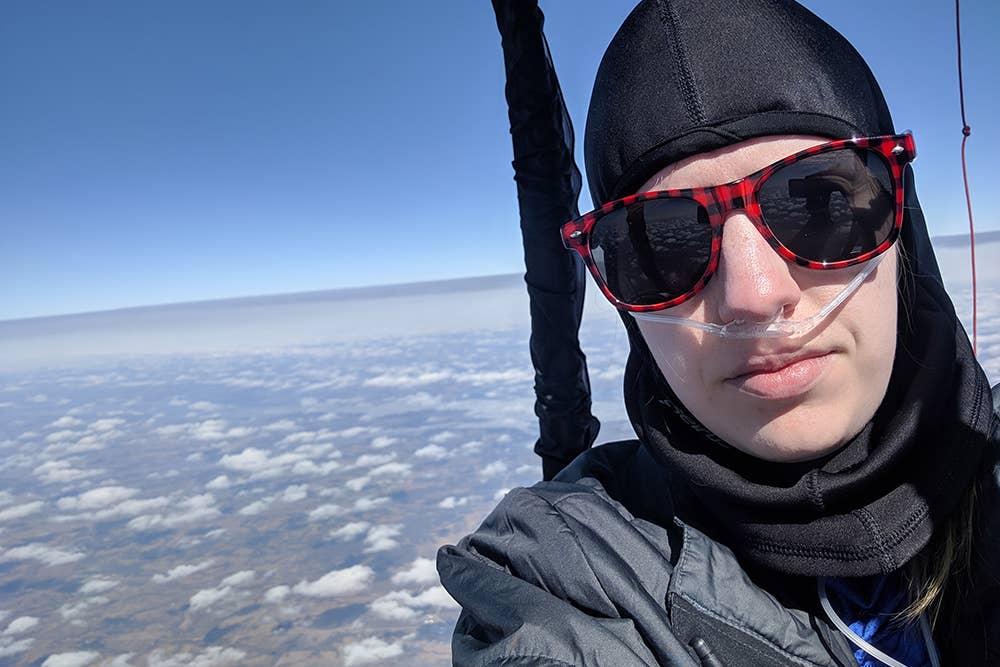Montgolfier’s Legacy in Ballooning Honors Record-Setting Pilot
On the anniversary of the brothers’ first test flight, we talk with NAA award-winning balloon pilot Kim Magee.

Kim Magee obtained three world and six national records in the AX-02 balloon. Courtesy: Kim Magee
On December 14, 1782, the Montgolfier brothers—Joseph-Michel and Jacques-Étienne—set out on their first serious flight test of the lighter-than-air conveyance they had developed while researching and experimenting with the process in the department of Ardèche, France.
The two brothers had built a wooden box, measuring roughly 9 ft by 9 ft by 12 ft and covered in taffeta-like cloth—based on a previous design of Joseph’s—and set it aloft by burning wool and hay under the bottom of the box. But they promptly lost control of it, according to C.C. Gillispie, in The Montgolfier brothers and the invention of aviation 1783-1784. It drifted nearly a mile and a quarter away—a failure.
It wasn’t until November 21 the next year that the brothers would successfully send a human aloft. Their feat, marked by the ballooning community as Montgolfier Day, is also recognized by the Fédération Aéronautique Internationale’s highest award for ballooning, the Montgolfier Diploma. In 2021, the FAI award for hot air ballooning went to Kim Magee, of Swisher, Iowa.
Magee operates the non-profit organization The Balloon Training Academy with her husband, Adam Magee. Adam was recently recognized with the 2021 FAA Safety Team (FAAST) Representative of the Year award.
How Do You Set a Balloon Record?
In an interview with FLYING, Kim Magee talked about several unique aspects of the record-setting process in ballooning. “A typical sport balloon holds a pilot and two passengers,” she said, and the envelope has a volume of 90,000 cubic feet.
“It’s easier to fly higher and longer in a bigger balloon, because it holds more fuel.” So, if a person attempts a record in a balloon within a certain category, but also breaks the record for the next category larger in size, the person acquires that record as well. That, Magee reckons, is how she came to hold six world records and nine national records.
“The AX-02 is 14,000 cubic feet, an opaque balloon with my feet dangling,” Magee said. “I obtained three world and six national records in altitude and distance for that flight.”
“The Montgolfier Diploma was awarded for the flight I did a few months later in the 42,000 cubic foot balloon, [a] teal balloon with a blue fabric basket. I flew from Mitchell, South Dakota, to a farm field southeast of Ottumwa, Iowa. I cruised for this flight between 15,000 and 16,000 ft msl, using supplemental oxygen, for almost six hours. I obtained three world and three USA records for this flight.”
Ballooning Is Changing
Like many areas of general aviation, hot-air ballooning is undergoing change—and not all of it is welcome.
Recently, the FAA announced that it would pursue the requirement of a second-class medical for the commercial hot-air balloon certificate for the first time.
“Balloon pilots are responsible for the safety of their passengers,” FAA Administrator Steve Dickson said. “This proposed rule would ensure that balloon pilots meet the same medical requirements as pilots of other commercial aircraft.”
Magee sees this as a significant issue for the very small, 6,000-member balloon community, as many folks come to ballooning to escape the hassle of obtaining a medical—and conscientiously self-certifying themselves as safe for flight.
“Like other GA categories, we’re seeing a graying of the sport, and some folks are concerned about that too,” Magee said.
But ballooning has also advanced to meet the times. Competitions now include GPS tracking, and competitors can create shapes, for example, as part of the contest.
How You Can Enjoy Ballooning
The path to a certificate, however, is pretty straightforward—especially for pilots who already hold a fixed-wing certificate. Because you’re going from powered to unpowered aircraft, there’s no knowledge exam required. A 10-hour course gets most people through it.
To find a place to learn, your best bet is to look locally for a ballooning club, Magee suggested.
“Most don’t have a balloon, but they will know where to find someone in the local area.”

Sign-up for newsletters & special offers!
Get the latest FLYING stories & special offers delivered directly to your inbox






